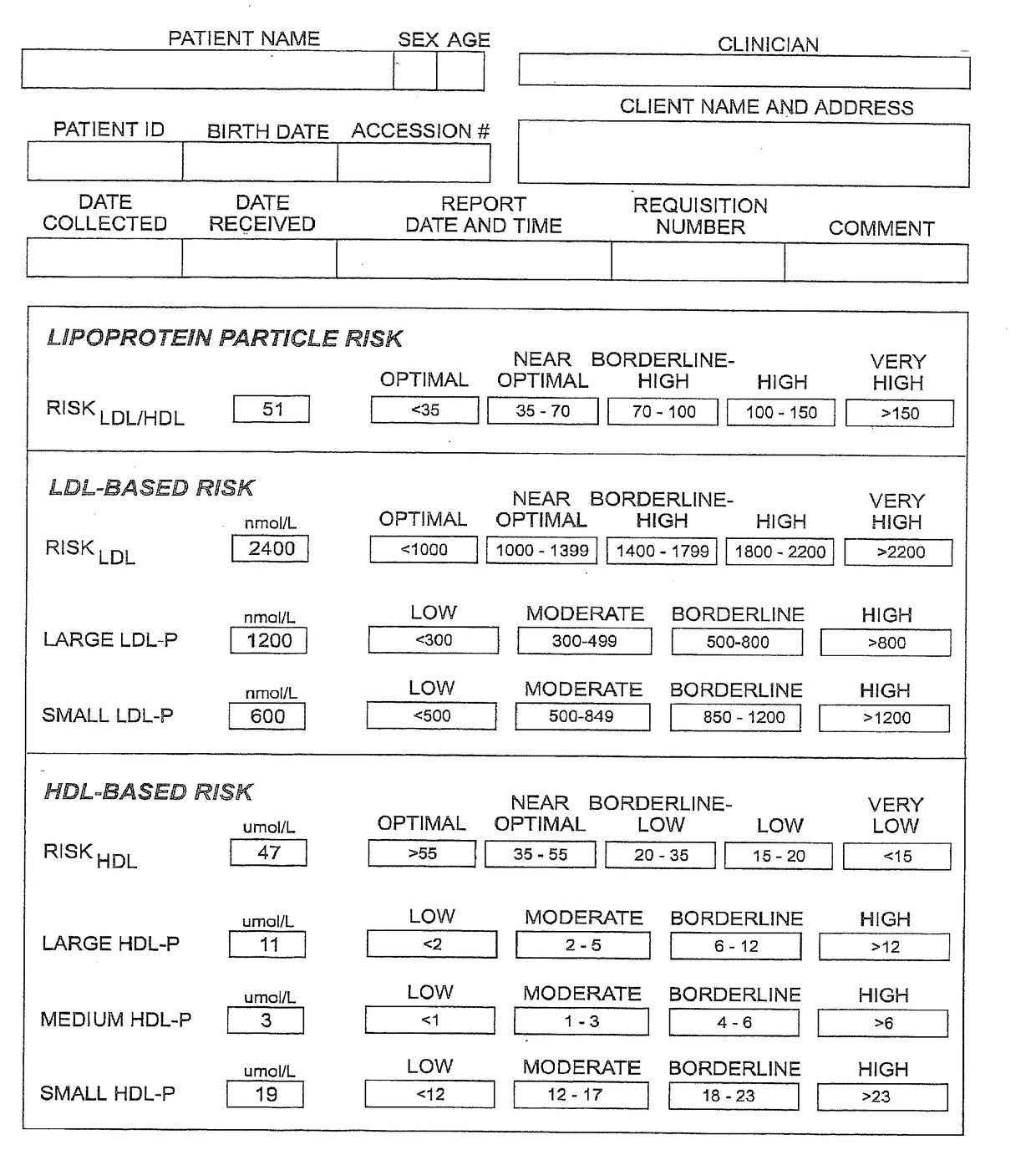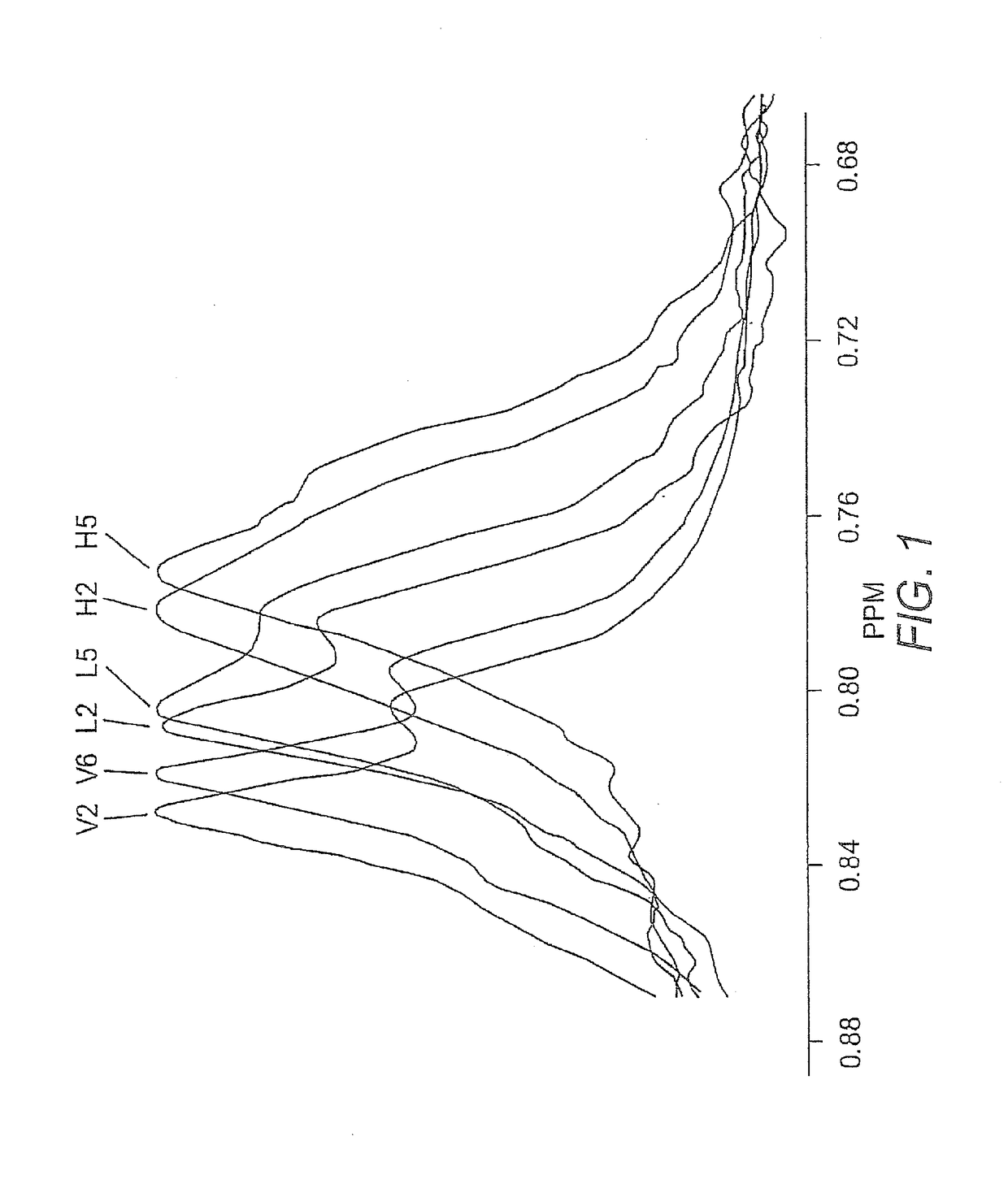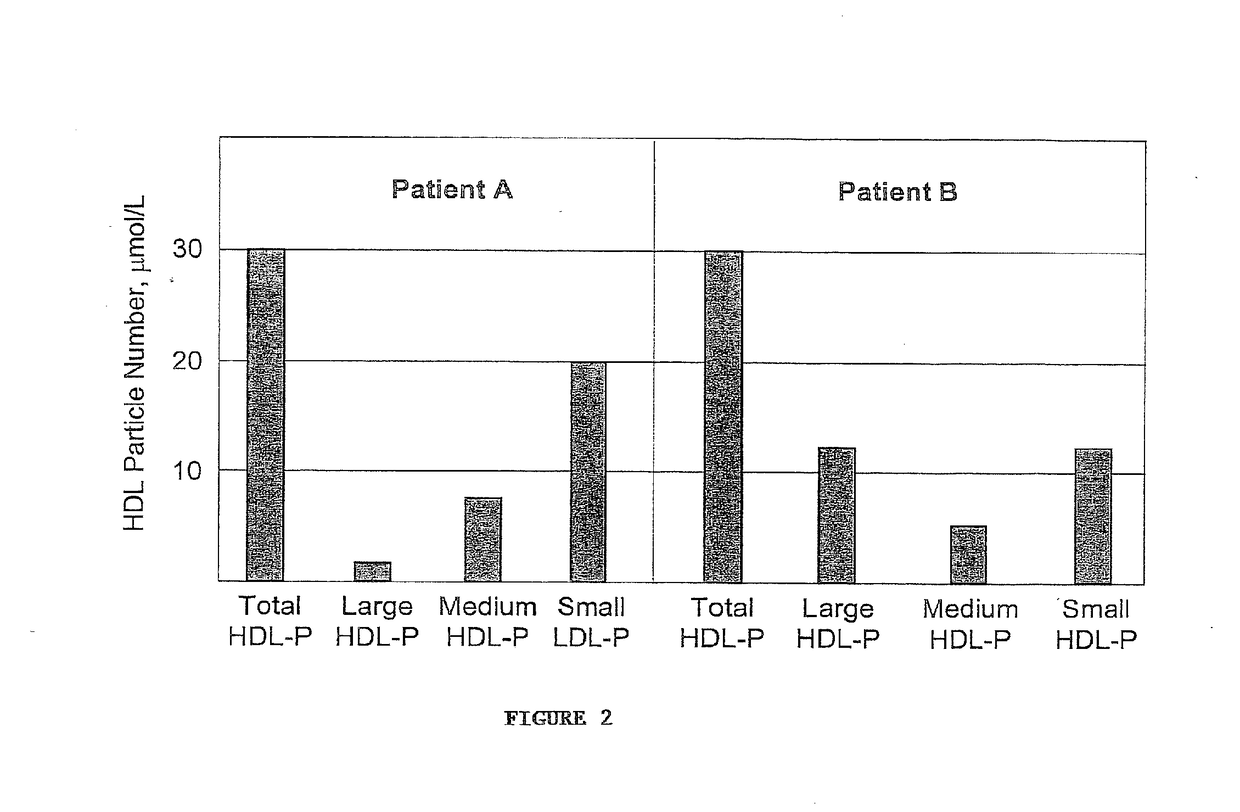Methods, Systems and Computer Programs for Assessing CHD Risk Using Adjusted HDL Particle Number Measurements
a technology of hdl particle number and chd risk, which is applied in the field of lipoprotein analysis, can solve the problems of not being representative of a person's body, hdl-c does not adequately reflect the number of hdl subclass particles, and the doctor won't know whether to direct therapy to reduce the numerator (ldl) or increase the denominator (hdl), so as to facilitate patient risk stratification and more effective treatment decisions
- Summary
- Abstract
- Description
- Claims
- Application Information
AI Technical Summary
Benefits of technology
Problems solved by technology
Method used
Image
Examples
example 1
[0149]Shown in the table are the relations of large and small LDL particle numbers with carotid atherosclerosis as assessed on a per particle basis. TABLE 2 is an example of LDL subclass weights using data presented in Mora et al., Both Large and Small LDL Particle Concentrations are Independently Associated with Carotid Atherosclerosis in the Multi-Ethnic Study of Atherosclerosis (MESA),
[0150]Abstract presented at 2005 Scientific Sessions of the American Heart Association, Dallas, Tex., Circulation. 2005; 112: 11-802.
TABLE 2Exemplary LDL subclass weighting for Carotid AtherosclerosisΔ IMTLDL(per 100subclassnmol / L)weightingLarge LDL-P17.5 microns1.5Small LDL-P11.8 microns1.0Data are from a linear regression model including both large and small LDL-P, adjusted for age, race, sex, hypertension, and smoking.
[0151]Shown in TABLE 2 are exemplary relations of large and small LDL particle numbers with carotid atherosclerosis as assessed on a per particle basis based on the MESA study. Subj...
example 2
[0153]Shown in TABLE 3 are the relationships of IDL and large and small LDL particle numbers with incident CHD events (nonfatal myocardial infarction and CHD death) as assessed on a per particle basis. The data was derived from results presented in Otvos et al., Low-Density Lipoprotein and High-Density Lipoprotein Particle Subclasses Predict Coronary Events and Are Favorably Changed by Gemfibrozil Therapy in the Veterans Affairs High-Density Lipoprotein Intervention Trial, Circulation. 2006; 113; 1556-1563; originally published online Mar. 13, 2006.
TABLE 3Exemplary LDL subclass weighting for incident CHD EventsOddsBetaRatiocoefficientLDL(per 1(per 100subclass1 SDSD)nmol / L)weightingIDL-P28nmol / L1.130.4365.7Large LDL-P250nmol / L1.340.1171.5Small LDL-P450nmol / L1.410.0761.0Data are from a logistic regression model including LDL and HDL subclasses in the same model, adjusted for treatment group, age, hypertension, smoking, body mass index, and diabetes.
[0154]Subjects were men (364 cases, ...
example 3
[0156]Table 4 below contains data from MESA relating the different HDL subclasses to carotid IMT and shows the resulting weighting factors. The HDL risk factor can be provided as a discrete risk factor and can be used to generate a parameter called RHDL or RiskHDL (or suitable identifier) to be calculated like RLDL. The RHDL could also be called the “Good Particle Index” and the RLDL could be called the “Bad Particle Index”. A combined parameter (called the Lipoprotein Particle Index or the like) using the ratio of Bad / Good Particle Indexes could be reported similar to the TC / HDL-C or LDL-C / HDL-C ratio.
TABLE 4Exemplary HDL subclass weightsHDLΔ IMTsubclassΔ IMT(per 1weight-1 SD(per 1 SD)μmol / L)ingLarge HDL-P4.0μmol / L−25.1 microns−6.3 microns2.2Medium HDL-P4.2 μmol / L−16.6 microns−3.9 microns1.4Small HDL-P4.6 μmol / L−13.2 microns−2.9 microns1.0
[0157]It is contemplated that additional studies may further optimize the weighting factors.
PUM
 Login to View More
Login to View More Abstract
Description
Claims
Application Information
 Login to View More
Login to View More - R&D
- Intellectual Property
- Life Sciences
- Materials
- Tech Scout
- Unparalleled Data Quality
- Higher Quality Content
- 60% Fewer Hallucinations
Browse by: Latest US Patents, China's latest patents, Technical Efficacy Thesaurus, Application Domain, Technology Topic, Popular Technical Reports.
© 2025 PatSnap. All rights reserved.Legal|Privacy policy|Modern Slavery Act Transparency Statement|Sitemap|About US| Contact US: help@patsnap.com



